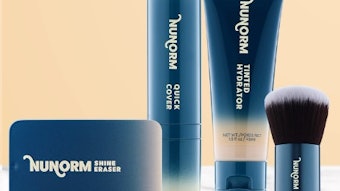By Leslie Benson, Assistant Editor, GCI magazine
While skin care marketing claims backed by efficient active ingredients and their advanced delivery systems may be what drives a consumer to buy a new product—that and its sensory and shelf-appeal—inspiration for brand manufacturers and suppliers themselves can come from the claims of industries outside of skin care. Konstantinos M. Lahanas, Ph.D., director of innovations for Limited Brands’ Beauty Avenues, says when he and his colleagues research other industries for cutting-edge technology, they look at the medical and allied industries, materials science, food and environmental industries. As for specific product areas he hopes to address further in the future, they include paying special attention to antiaging, moisturization, acne care, sunscreen, body care and fragrance innovations. “It serves to introduce new or improved functionality, add a new visual or texture or solve a problem to keep us competitive,” Lahanas says.
As for visual appeal for delivery systems, International Specialty Products (ISP) offers a wide variety of brightly colored hydrogel beads through its microencapsulated Captivates product range, which hold combinations of oils, waxes, fats, butters, lipophilic actives, fragrances and more until they’re ready to be fractured and released to the skin. Niche skin care delivery systems also remain in demand.
For distributors of active ingredients suppliers, such as Centerchem, Inc., clients’ skin care innovations have recently included proprietary actives in the areas of antiaging and more niche categories like stretch mark reduction and lip plumping, says Thomas Kovats, vice president of cosmetic ingredients. For instance, one of his clients, Spain’s Lipotec, has introduced Chromabright, a patented molecule designed for use in skin brightening applications and UV protection. Lipotec also introduced Vanistryl, a preventative anti-stretch mark system. However, when looking to the future of skin care, Kovats and his colleagues see possibilities in “pharmaceuticals—specifically in the area of dermatology. We also look closely at the nutrition area for botanicals that may cross over into the skin care market.”
On the other hand, new botanical actives are not the only big thing hitting the skin care market. Johann Wiechers, president of the International Federation of the Societies of Cosmetic Chemists (IFSCC) believes that already utilized, familiar ingredients will make a comeback as well, due to stricter ingredients standards and regulations from organizations such as REACH. “It will be much more difficult to introduce a new ingredient to the market, but people will look much closer at how the ‘old’ ingredients could work better,” Wiechers says. “So we will get a renaissance of old materials.”
Wiechers also says high-tech cosmetics manufacturers are researching the N.I.C.E. (neuro-immuno-cutaneous-endocrine) system, developing products to make more emotion-based claims with the belief that psychological health and the nervous system affect skin’s immunity and the presence of inflammatory skin disorders. He says that of the botanical extracts used as future skin care actives, they will be found in more extreme environments—near hot springs or volcanic faults. “If material can survive there, it can survive almost anywhere,” he says.
But none of this year’s newsmakers are as intriguing as microneedles, which offer the possibility for a new delivery system in the skin care arena. For more on this subject, read “Skin Care Thinks Small to Deliver Big” in the August 2008 issue of GCI magazine.










